"Speed is life," is a phrase used by fighter pilots and it was never more prevalent than in the late 1950’s when post-war technology was advancing at a rapid pace.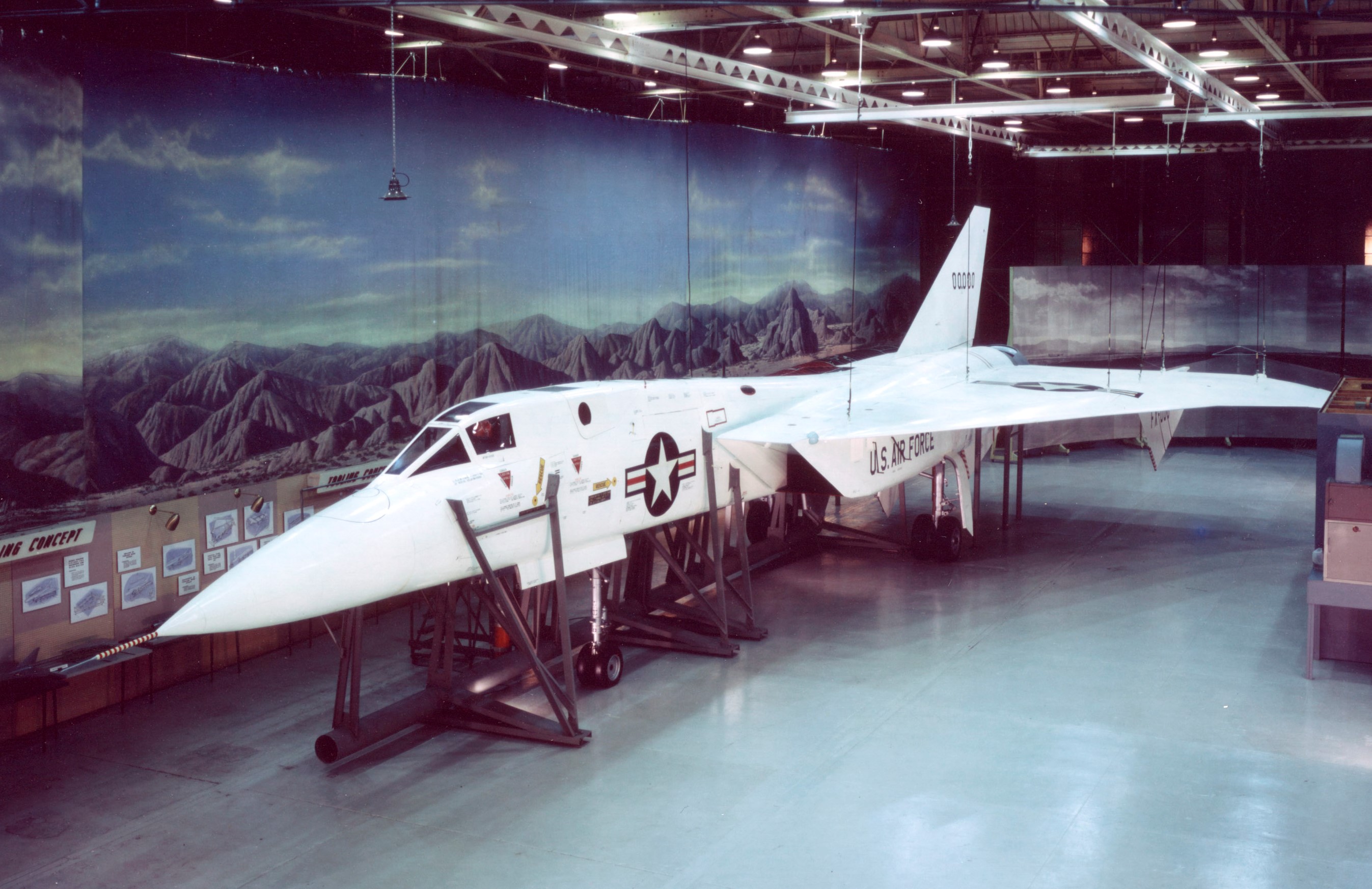 The technological advancements in aviation allowed aircraft to go from piston driven fighters to rocket-powered vehicles capable of flying at Mach 3 in just 10 years.
The technological advancements in aviation allowed aircraft to go from piston driven fighters to rocket-powered vehicles capable of flying at Mach 3 in just 10 years.
In 1949, the Air Force issued a Request for Proposals (RFP) for an advanced interceptor capable of defending against the new Soviet 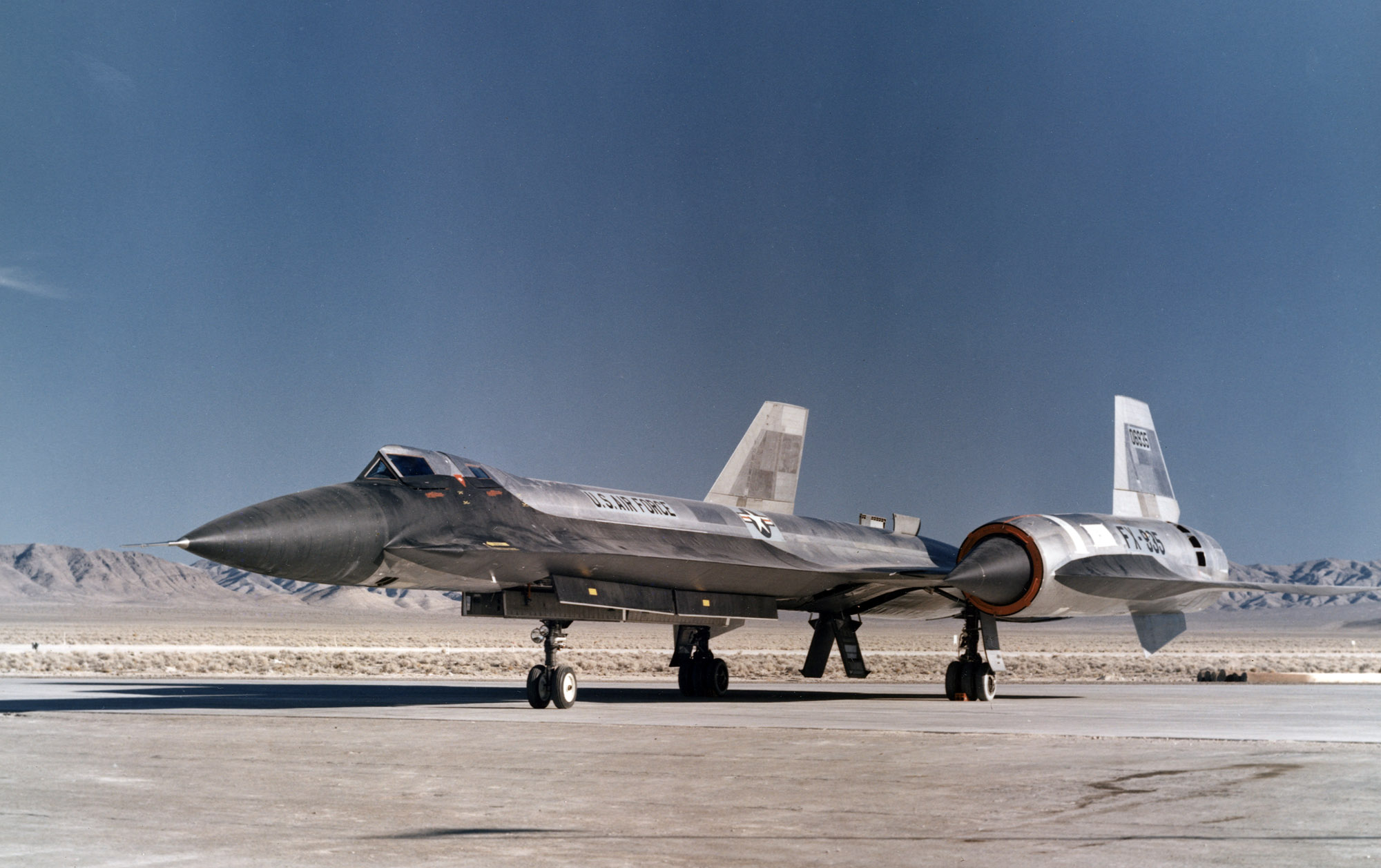 intercontinental bombers that the U.S. believed would be fielded soon. The program became known as the ‘1954 Interceptor’ after the year it was expected to enter operational service. The service recognized the complexity in such a design meant that it was no longer practical to develop the airframe and subsystems separately and expect them to work properly when assembled. The Air Force introduced the ‘weapons system’ concept where a single manufacturer is selected to manage the entire development effort.
intercontinental bombers that the U.S. believed would be fielded soon. The program became known as the ‘1954 Interceptor’ after the year it was expected to enter operational service. The service recognized the complexity in such a design meant that it was no longer practical to develop the airframe and subsystems separately and expect them to work properly when assembled. The Air Force introduced the ‘weapons system’ concept where a single manufacturer is selected to manage the entire development effort.
As a result of this RFP, the Republic Aircraft Corporation began designing the Mach 3 capable XF-103. Though they didn’t win the competition, the Air Force felt the project should continue. The most unique feature of the XF-103 was the dual-cycle propulsion system which could act as a traditional turbojet as well as a ramjet. The combination of the Wright Aeronautical Corporation XJ67 engine and XRJ55 afterburner unit meant the turbojet could be shut down for speeds above Mach 3 making the XF-103 a pure ramjet. Though Republic stated the aircraft could cruise above Mach 3, an independent performance evaluation by the Air Materiel Command (AMC) showed a sustained speed of just over Mach 2.5.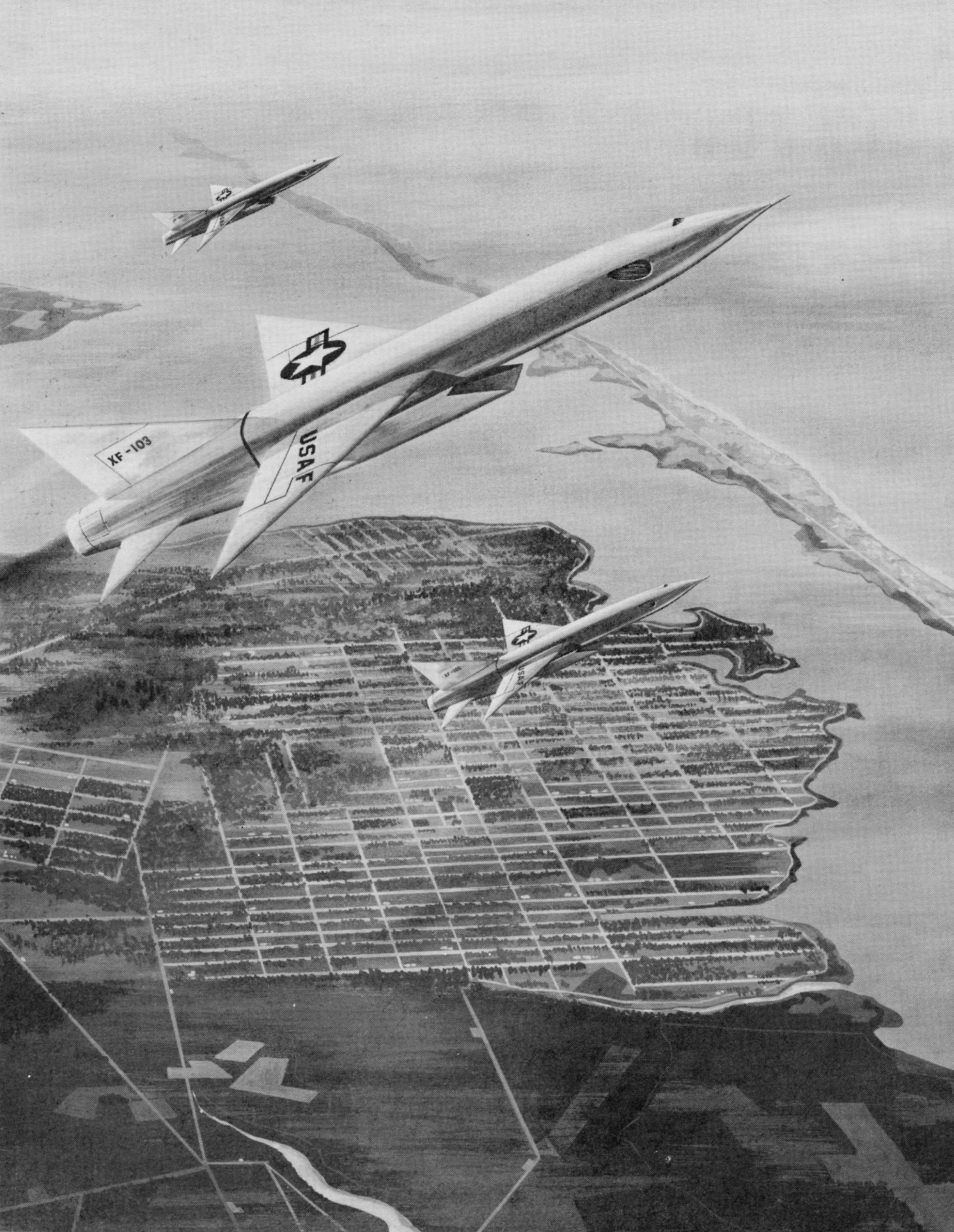
The full-scale metal mock-up was inspected in March 1953 showing some unique features of the XF-103 included a design with a flush canopy system using a retractable periscope for forward view at high speeds and was also the first aircraft designed to use an escape capsule for the pilot’s protection for ejection at high speeds. The aircraft was also one of the first programs to investigate the widespread use of titanium in the airframe as a way to deal with temperatures of high speed flight. The Hughes GAR-1 Falcon missiles and “Might Mouse” folding fin aerial rockets were all carried internal weapons bays in the belly and sides of the fuselage.
By 1955, the program was experiencing serious difficulties and the low priority program had little funding and was making slow 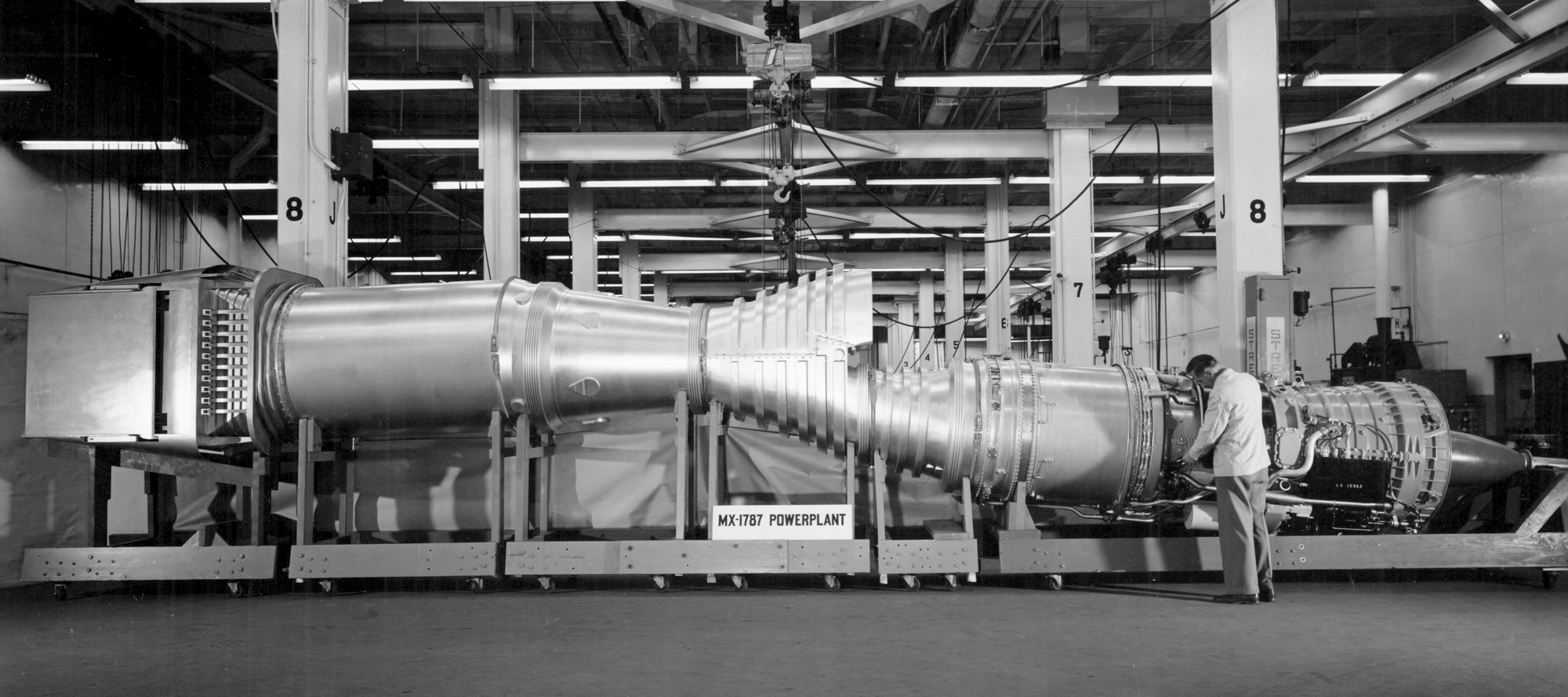 progress. The original Hughes MA-1 fire control system was replaced by the ASG-18 radar and GAR-9 long-range missile which required a major redesign of the forward fuselage. In late 1955, the Air Defense Command released General Operating Requirement (GOR) 114 for the Mach 3 Long-Range Interceptor, Experimental (LRI-X) program. The XF-103 was cut back to a single prototype in 1957 for use as an LRI-X testbed for the new radar and missile system but little progress had been made by August and the Air Force cancelled the XF-103 and Wright engine programs.
progress. The original Hughes MA-1 fire control system was replaced by the ASG-18 radar and GAR-9 long-range missile which required a major redesign of the forward fuselage. In late 1955, the Air Defense Command released General Operating Requirement (GOR) 114 for the Mach 3 Long-Range Interceptor, Experimental (LRI-X) program. The XF-103 was cut back to a single prototype in 1957 for use as an LRI-X testbed for the new radar and missile system but little progress had been made by August and the Air Force cancelled the XF-103 and Wright engine programs.
The new LRI-X contract was for two long-range, high performance prototypes with a follow-on order for 31 preproduction airframes followed by an additional 480 production aircraft. The new requirements required a two-man crew and twin engines. North American Aviation (NAA) won the contract in June 1957 and the Air Force designated the new aircraft F-108A. North American was also attempting to win the contract for the latest advanced bomber and as part of its bid to win the XB-70 contract, NAA proposed ‘sharing’ components between the two aircraft, this included the General Electric J93 engines then under development, as well as, the escape capsule system for pilot safety. The new vehicle would also be designed to accommodate the Hughes ASG-18 radar and GAR-9 missile system and have an aerial refueling capability. The final XF-108 mockup was inspected in January 1959 and it was expected that the aircraft would make its first fight in March 1961. At the time, North American stated that the F-108 would cruise and fight at Mach 3 speeds with a 1,000 nautical mile radius on internal fuel as well as having a combat ceiling in excess of 77,000 feet and zoom-climb ceiling over 100,000 feet.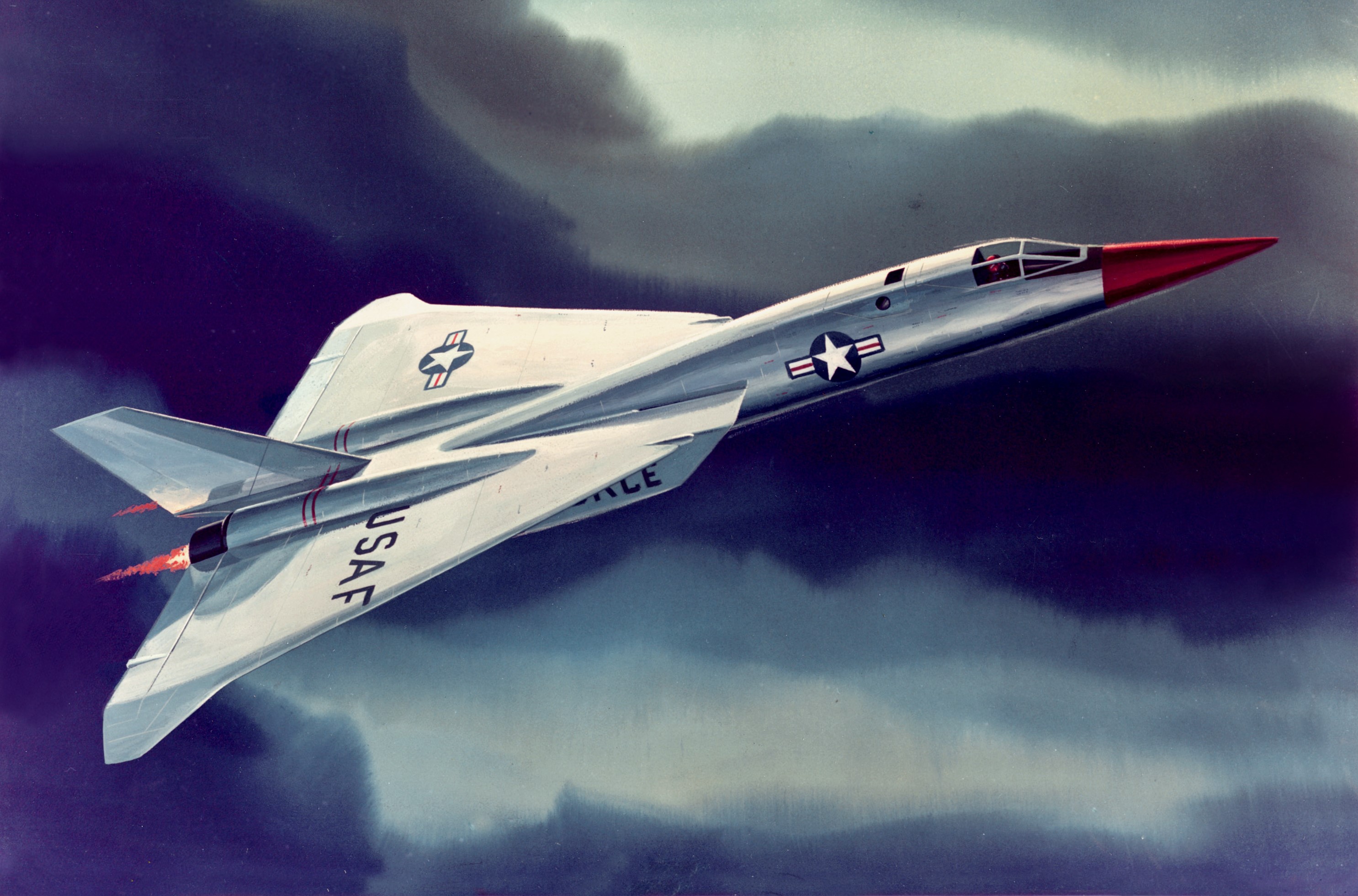
The F-108 design continued to be refined throughout the early part of 1959 with a change of forward fuselage length, ventral fin size and wing dihedral. While the long-range interceptor was gaining support from its apparent success in development, the price tag increased as well. In response to this, the program was evaluated against a Convair B-58 interceptor concept and an ‘I-70’ interceptor version of the B-70 bomber, which only substantiated the value of the F-108 which was given the name ‘Rapier’ in May 1959. Despite progress, the cost of the program would be responsible to its cancellation, the Air Force just could not find the necessary funding to continue and the F-108 program was cancelled in September 1959.
Though the Air Force cancelled the F-108 program, they chose to continue development of the Hughes ASG-18 radar and GAR-9 missile systems. Beginning in October 1958, Convair received a contract to modify two B-58 Hustler’s to accommodate the new radar & missile system, although it was subsequently cut to a single B-58 (55-665) due to a shortage of funds. The modification added about 7 feet to the nose and it earned the nickname 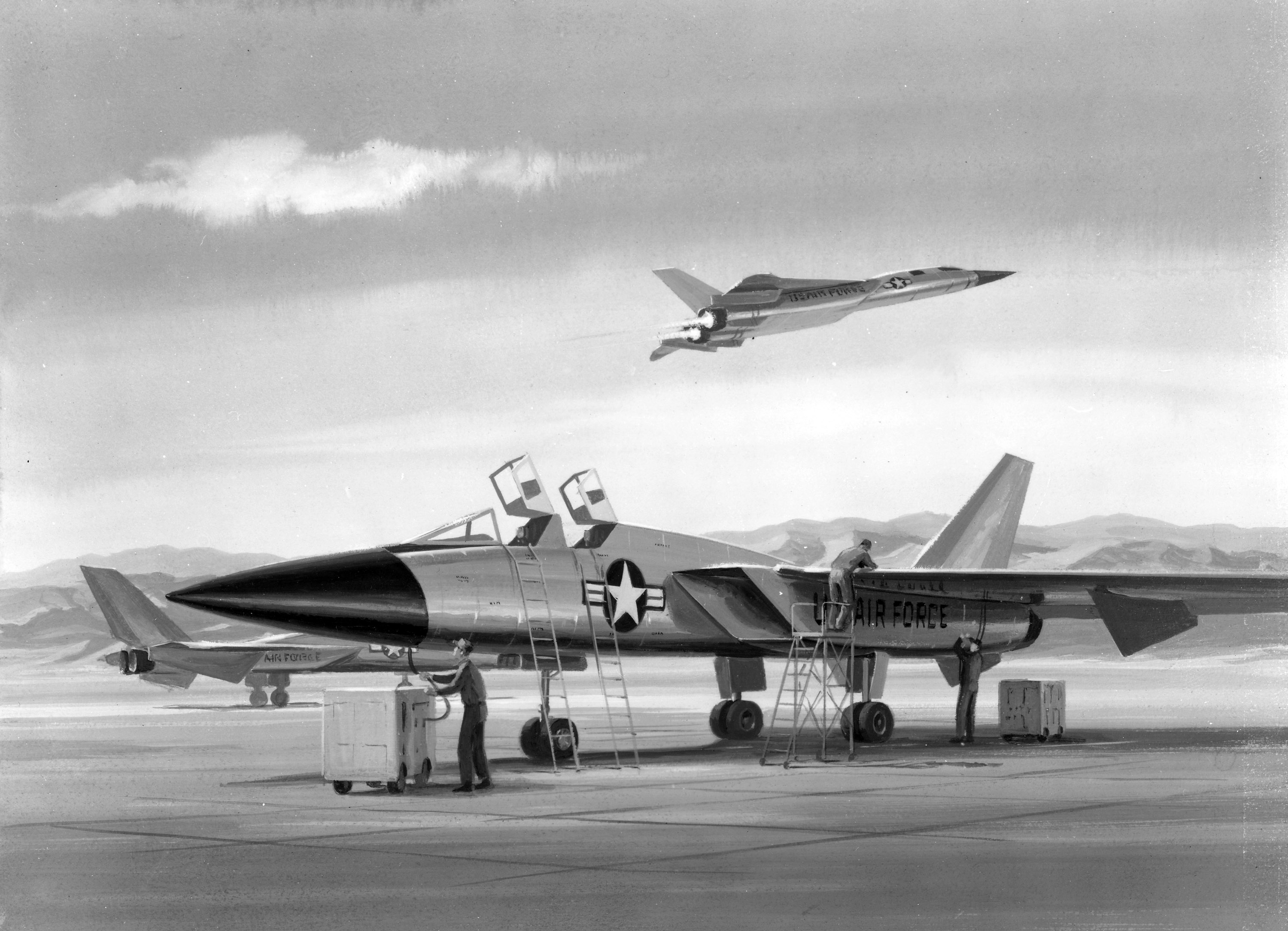 ‘Snoopy 1’. The first GAR-9 launch from the B-58, in March 1962, the missile came within 6 feet of the QF-80 target drone that was approximately 15 nautical miles from the B-58, and another test in August grazed the side of the QF-80.
‘Snoopy 1’. The first GAR-9 launch from the B-58, in March 1962, the missile came within 6 feet of the QF-80 target drone that was approximately 15 nautical miles from the B-58, and another test in August grazed the side of the QF-80.
Still the Air Force was still in need of a Mach 3 interceptor and Lockheed Skunk Works chief, Kelly Johnson, saw an opportunity to give them what they needed. Based on the CIA’s new spyplane, the A-12, Johnson proposed an interceptor variant known internally as the AF-12. In October 1960, Lockheed was awarded a $1 million contract 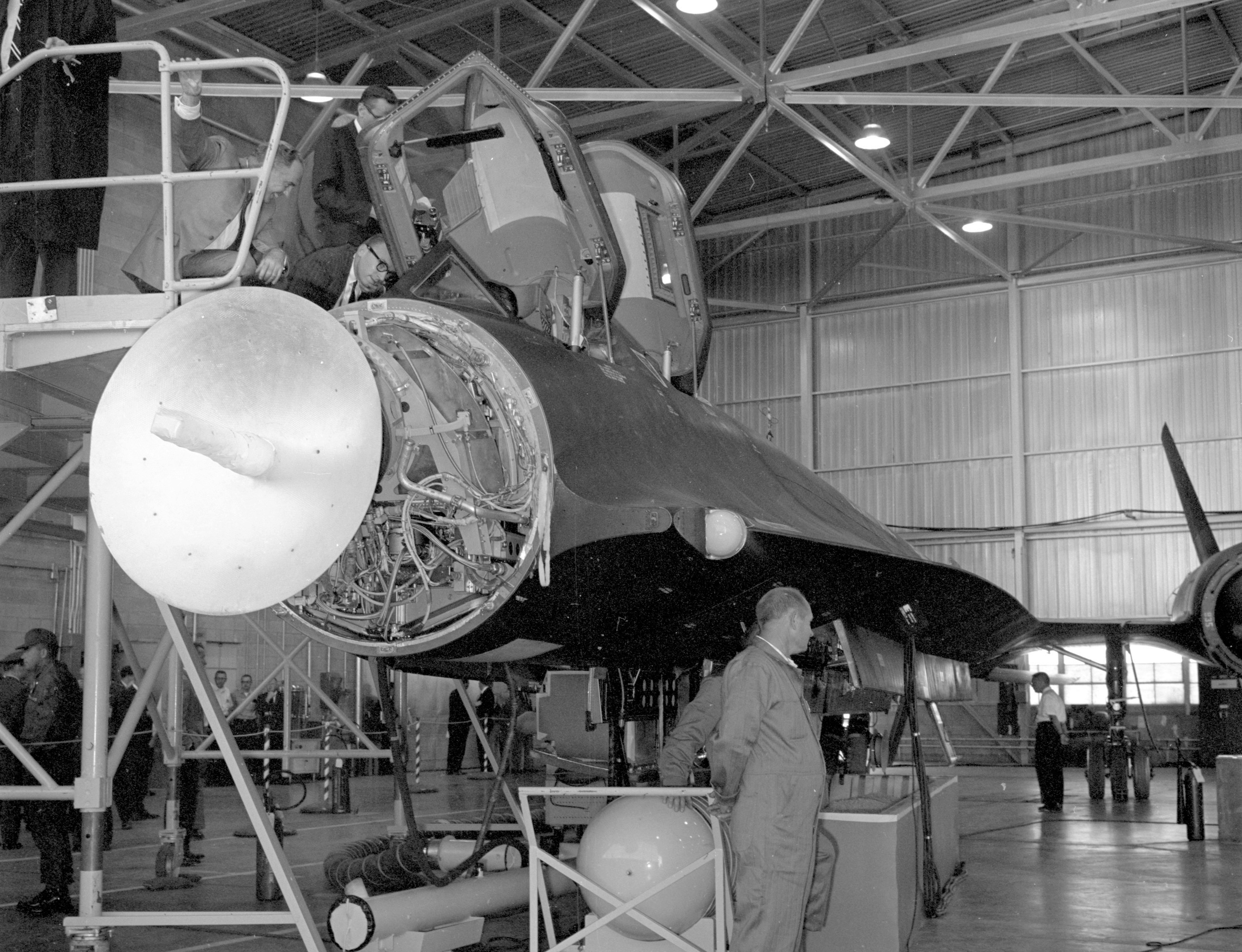 under project Kedlock. Modifications to the A-12 design would be required to house the ASG-18 radar and GAR-9 missiles, these included the addition of a second crew member, modified nose design and internal missile bays in the lower fuselage. Wind tunnel tests of the new design showed directional instability and small ventral fins were added to the bottom of each nacelle and larger folding ventral fin added under the aft fuselage.
under project Kedlock. Modifications to the A-12 design would be required to house the ASG-18 radar and GAR-9 missiles, these included the addition of a second crew member, modified nose design and internal missile bays in the lower fuselage. Wind tunnel tests of the new design showed directional instability and small ventral fins were added to the bottom of each nacelle and larger folding ventral fin added under the aft fuselage.
The new aircraft made its first flight on August 7, 1963, and President Johnson announced the programs existence on February 29, 1964 when he stated, “The United States has successfully developed and advanced experimental aircraft, the A-11, which has been tested in sustained flight at more than 2,000 mph and at altitudes above 70,000 feet”. The “A-11” reference was used intentionally to mislead intelligence sources as the aircraft had recently been given the official designation of YF-12A. Once the three YF-12’s were at Edwards 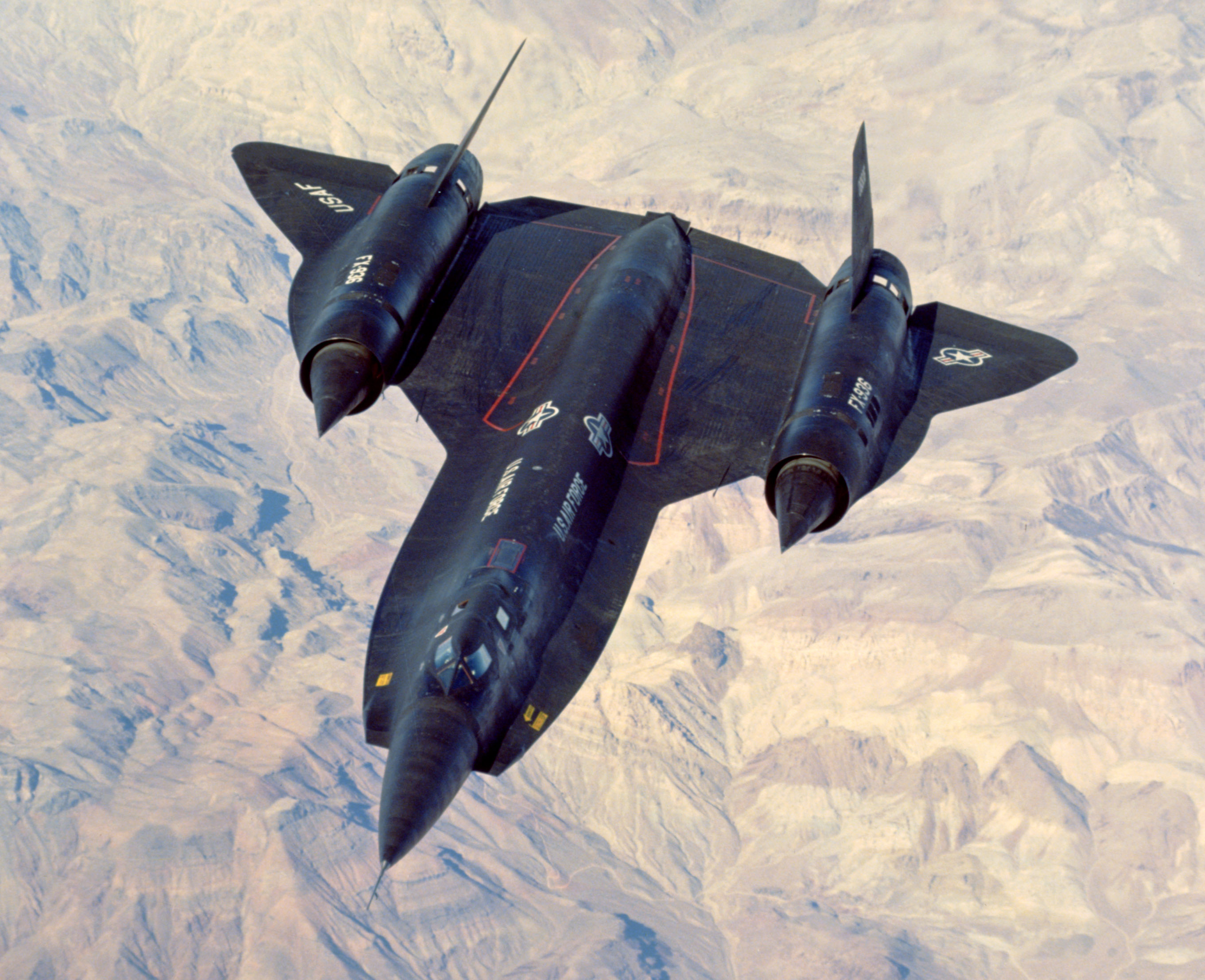 AFB, the test program proceeded rapidly. The aircraft made its first flight at the design speed of Mach 3.23 on January 9, 1965, and the first missile firing just over 2 months later on March 18. The YAIM-47 (as the GAR-9 was now designated) missile hit a Q-2C Firebee drone flying 36 miles away with a closure rate of over 2,000 mph.
AFB, the test program proceeded rapidly. The aircraft made its first flight at the design speed of Mach 3.23 on January 9, 1965, and the first missile firing just over 2 months later on March 18. The YAIM-47 (as the GAR-9 was now designated) missile hit a Q-2C Firebee drone flying 36 miles away with a closure rate of over 2,000 mph.
On May 1, 1965, the first and third YF-12A’s were used to set several FAI Class C-1 Group 3 (turbojet-powered landplanes) absolute records, including; sustained altitude of 80,257 feet and speed over a 15/25-KM closed course of 2,070.1 mph. 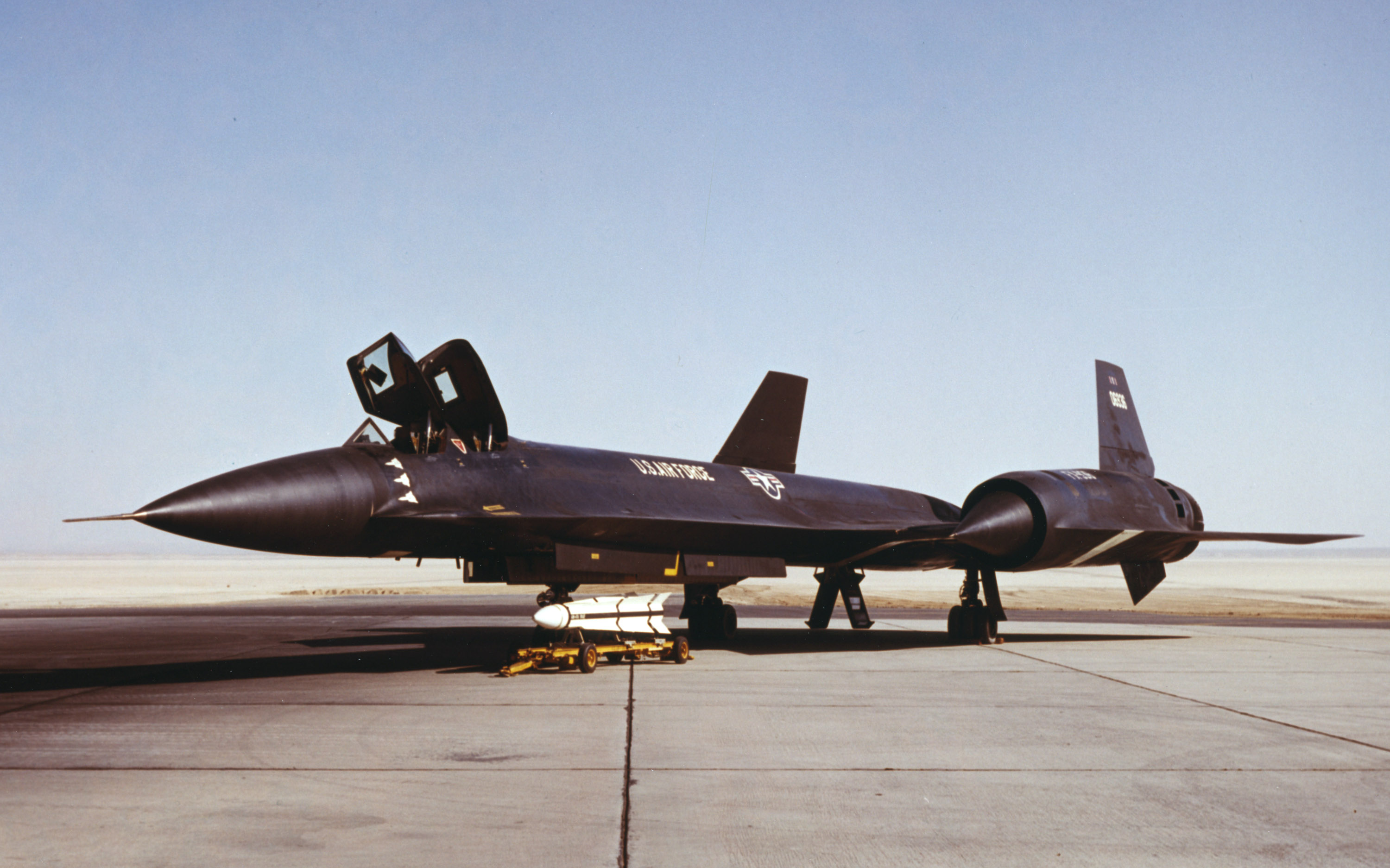 Between March 1965 and September 1966, the YF-12’s made a total of seven AIM-47 missile firings with only one failure due to gyro failure on the missile. The final launch on September 21, 1966 had the third YF-12A flying at Mach 3.2 at 75,000 feet and a QB-47 at just 500 feet when the missile took off 3 foot section of the left horizontal stabilizer. Though the Air Force provided an additional $500,000 for engineering of the production F-12B in 1965, they chose to terminate the program in its entirety in January 1968. The Air Force finally had their Mach 3 interceptor and they built exactly three of them.
Between March 1965 and September 1966, the YF-12’s made a total of seven AIM-47 missile firings with only one failure due to gyro failure on the missile. The final launch on September 21, 1966 had the third YF-12A flying at Mach 3.2 at 75,000 feet and a QB-47 at just 500 feet when the missile took off 3 foot section of the left horizontal stabilizer. Though the Air Force provided an additional $500,000 for engineering of the production F-12B in 1965, they chose to terminate the program in its entirety in January 1968. The Air Force finally had their Mach 3 interceptor and they built exactly three of them.
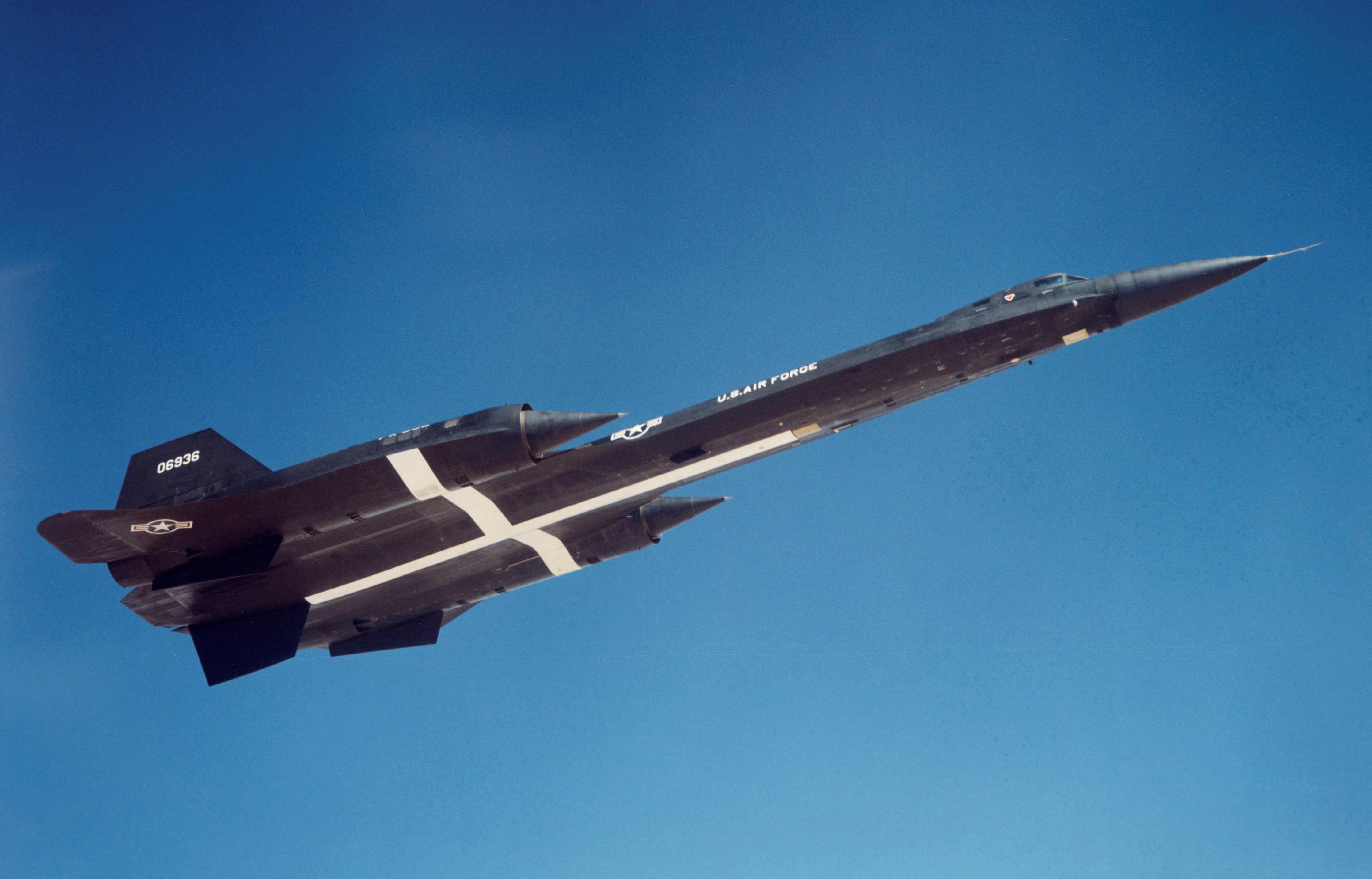 The aft fuselage of the first YF-12A was used to create the sole SR-71C trainer which is currently on display at the Hill Aerospace Museum in Utah, the third YF-12A was lost in a non-fatal accident on July 24, 1971 and the sole surviving second YF-12A is currently on display in the R&D gallery of the National Museum of the United States Air Force.
The aft fuselage of the first YF-12A was used to create the sole SR-71C trainer which is currently on display at the Hill Aerospace Museum in Utah, the third YF-12A was lost in a non-fatal accident on July 24, 1971 and the sole surviving second YF-12A is currently on display in the R&D gallery of the National Museum of the United States Air Force.
Additional Reading:
Lyons, Robert P., "The Search for an Advanced Fighter: A History from the XF-108 to the Advanced Tactical Fighter," ACSC, Apr 1986.
Jenkins, Dennis R., “Experimental and Prototype U.S. Air Force Jet Fighters” Specialty Press, 2008